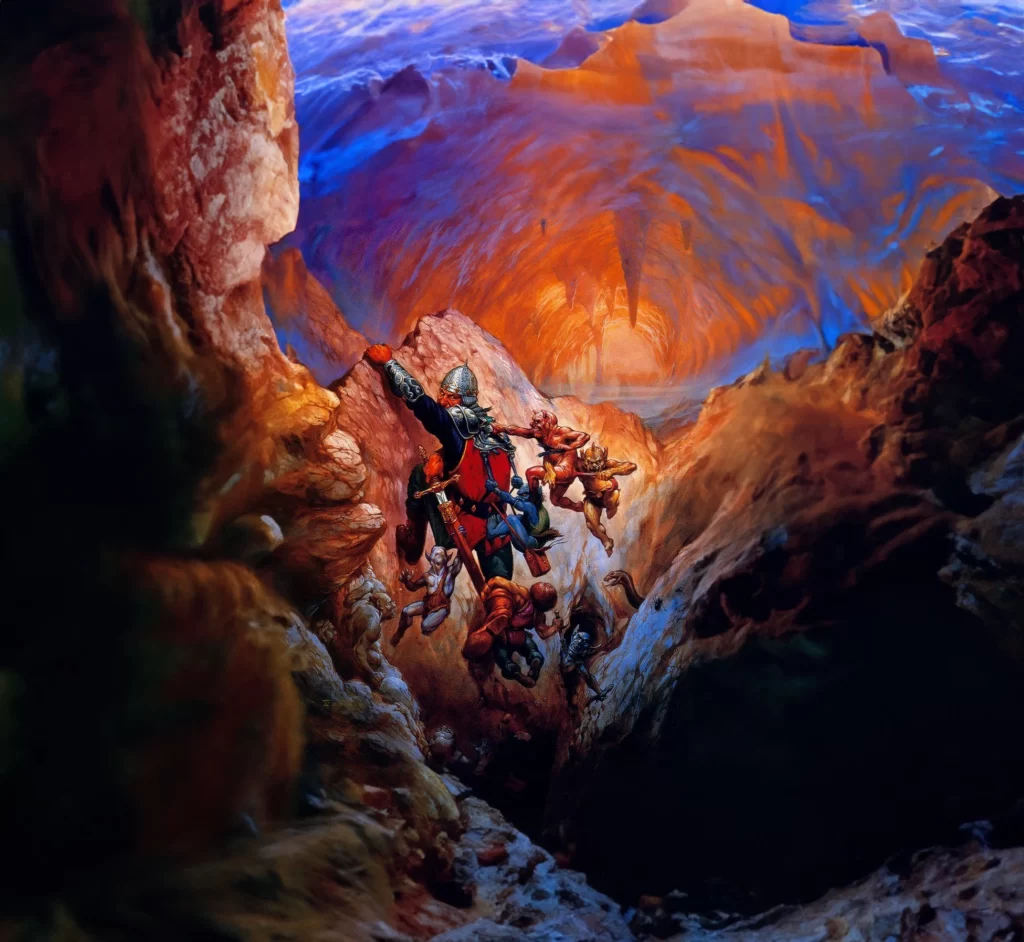
Characters who spend much time exploring the unknown reaches below the earth's surface are sure to encounter many situations requiring climbing skills. Natural caves and caverns are commonly filled with many passages blocked by cliffs or sheer drop-offs. While other characters cannot approach the efficiency of thieves at climbing, members of all character classes have a limited ability to move up and down steep slopes, provided hand and footholds are available.
Only thieves have the capability to ascend sheer walls, cliffs, and the like. Other characters may try to climb very rough stone surfaces, as well as trees, poles, ropes, and other simple routes. The mountaineering proficiency can increase these abilities for both thieves and non-thieves.
Types of Surfaces
Very Smooth surfaces include faces of smooth, uncracked rock, wooden walls with no accessible cross beams or other handholds, and metal walls where individual plates of metal have been bolted together. Completely smooth walls, such as a single sheet of metal, cannot be climbed without tools.
Smooth but Cracked surfaces include most types of masonry, a typical cavern or dungeon wall, or a cliff that is not subject to a great deal of weather erosion. Castle walls, towers, and city walls that receive regular maintenance fall into this category.
Rough surfaces include most natural cliff faces, constructed walls that have not been maintained regularly, and most wooden walls or stockades. Any kind of masonry using natural stone instead of bricks or blocks will form a rough surface.
Rough with Ledges surfaces include hand- and footholds of three-inch width or larger or provide some other kind of usable route. A cliff that has been steadily eroded by frost, or a chimney (a crack that a climber can follow up a slope, pushing off against each side with his hands and feet) will provide a rough surface with ledges. Also, stone buildings that are approaching a state of ruin often create this sort of climbing surface.
Ice Wall surfaces are sheer surfaces made mostly or entirely of ice. They are treacherous, and even thieves cannot climb ice without tools.
Pole surfaces include poles made of any materials, tall slender trees with few branches, and free-hanging ropes. A pole's diameter cannot be greater than 1/4 the height of the character attempting to climb it, unless the character uses a rope (see Climbing Tools). Any pole with tree bark still attached is considered a non-slippery surface. A rope only falls into this category if the character cannot brace his feet against a wall or some other surface to aid the climb.
Tree surfaces include any trees where branches are plentiful enough to provide handholds, or any constructed object of girders or a similar grid, such as scaffolding.
Rope and Wall surfaces include any situations where a character can climb up a rope and brace his feet against a wall or some other vertical surface as he climbs.
Sloping Wall surfaces represent areas that do not quite qualify as vertical yet are too sloped to allow normal walking. Like all types of climbing, a character's chance of success assumes that he has both hands free. If a character falls while on a sloping wall surface, he can make a saving throw vs. petrification; if the save is successful, he takes no damage from the fall. Even if the save is unsuccessful, the fall only inflicts half of the normal damage.






